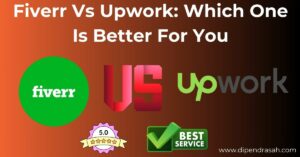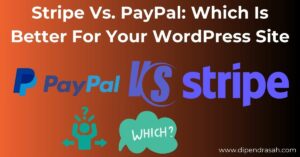Understanding the Basics of Blog Writing
Blogging has become an essential tool for sharing information, promoting products, and building communities. Whether you’re a seasoned blogger or a beginner, understanding the basics of blog writing is crucial to creating content that resonates with your audience and achieves your goals. In this comprehensive guide, we’ll delve into the key aspects of blog writing, from defining a blog post to promoting your content effectively.
Defining a Blog Post
What is a Blog Post?
A blog post is an article or entry published on a blog, which is a website or section of a website where content is regularly updated. Blog posts can range from personal reflections and opinions to detailed guides and professional insights. They typically include text, images, videos, and links to other resources, making them versatile and engaging.
Purpose of Writing a Blog
The purpose of writing a blog can vary greatly depending on the blogger’s goals. Some common purposes include:
- Sharing Information: Educating readers about a particular topic or providing updates.
- Building Community: Fostering a sense of belonging and interaction among readers.
- Promoting Products or Services: Highlighting offerings and driving sales or leads.
- Establishing Authority: Showcasing expertise and building credibility in a specific niche.
- Entertaining Readers: Providing enjoyable and engaging content that keeps readers coming back.
Types of Blog Posts
There are various types of blog posts, each serving a unique purpose. Some popular types include:
- Listicles: Articles structured as lists, such as “10 Tips for Healthy Eating.”
- How-Tos: Step-by-step guides that teach readers how to accomplish a specific task.
- Case Studies: In-depth analyses of particular instances, showcasing successful strategies or lessons learned.
- Interviews: Conversations with experts or influential figures in a given field.
- Opinion Pieces: Personal reflections and viewpoints on current events or industry trends.
- Reviews: Assessments of products, services, or experiences.
- News Posts: Updates on recent developments in a particular area.
Identifying Your Target Audience
Why Knowing Your Audience Matters
Understanding your target audience is essential for creating content that resonates with readers. When you know who your audience is, you can tailor your writing style, topics, and tone to meet their needs and interests, leading to higher engagement and loyalty.
Techniques for Understanding Your Audience
- Market Research: Conduct surveys, interviews, and focus groups to gather data on your audience’s demographics, preferences, and pain points.
- Analytics Tools: Use tools like Google Analytics to track user behavior on your blog, identifying which posts are most popular and how visitors interact with your content.
- Social Media Listening: Monitor social media platforms to see what topics and trends your audience is discussing and sharing.
Creating Reader Personas to Tailor Your Content
Reader personas are fictional representations of your ideal readers based on real data and insights. Creating personas helps you visualize your audience and tailor your content to their specific needs. Key elements of a reader persona include:
- Demographics: Age, gender, occupation, location.
- Interests: Hobbies, favorite topics, preferred content formats.
- Pain Points: Challenges and problems they seek solutions for.
- Goals: What they hope to achieve by reading your blog.
Generating Fresh Blog Post Ideas
Brainstorming Techniques
- Mind Mapping: Start with a central topic and branch out into related subtopics and ideas.
- Brainwriting: Write down as many ideas as possible in a set amount of time without filtering or judging them.
- SWOT Analysis: Identify strengths, weaknesses, opportunities, and threats related to your blog and use these insights to generate content ideas.
Using Keyword Research Tools
Keyword research tools like Google Keyword Planner, Ahrefs, and SEMrush can help you discover popular search terms and topics within your niche. By targeting these keywords, you can create content that attracts more organic traffic.
Keeping Up with Industry Trends
Stay informed about the latest trends and developments in your industry by following news sources, subscribing to newsletters, and joining online communities. Writing about current trends can make your blog more relevant and engaging.
Crafting a Captivating Headline
Importance of a Strong Headline
A strong headline is crucial for grabbing readers’ attention and enticing them to click on your post. It sets the tone for your content and can significantly impact your blog’s success.
Tips for Writing Catchy Headlines
- Be Clear and Specific: Ensure your headline clearly conveys the topic and value of your post.
- Use Numbers and Lists: Headlines like “7 Ways to Improve Your Writing” are attention-grabbing and easy to read.
- Incorporate Power Words: Words like “ultimate,” “essential,” and “proven” can make your headline more compelling.
- Ask Questions: Headlines that pose a question can spark curiosity, e.g., “Are You Making These Blogging Mistakes?”
- Create a Sense of Urgency: Phrases like “Don’t Miss Out” or “Act Now” can encourage readers to click.
Examples of Compelling Headlines
- “10 Proven Strategies for Boosting Your Blog Traffic”
- “How to Start a Successful Blog in 7 Easy Steps”
- “Case Study: How We Increased Our Conversion Rate by 50%”
- “The Ultimate Guide to Keyword Research for Bloggers”
- “Are You Making These Common SEO Mistakes?”
Structuring Your Blog Post
Outline Essential Sections: Introduction, Body, Conclusion
A well-structured blog post typically includes the following sections:
- Introduction: Introduce the topic, provide context, and outline what readers can expect.
- Body: Break down the main points, providing detailed information, examples, and insights.
- Conclusion: Summarize key takeaways, reinforce the main message, and include a call to action.
Importance of Clear and Logical Structure
A clear and logical structure makes your content easier to read and understand. It helps guide readers through your post, ensuring they stay engaged and absorb the information effectively.
Using Headings and Subheadings Effectively
Headings and subheadings break up your content into manageable sections, making it more scannable. They also help improve SEO by signaling the structure of your post to search engines.
Writing Quality Content
Creating Engaging and Informative Content
Engaging and informative content keeps readers interested and coming back for more. Focus on providing value, solving problems, and addressing your readers’ needs and interests.
Incorporating Personal Experience and Expertise
Sharing personal experiences and insights adds authenticity and relatability to your content. It helps build trust and establishes you as an authority in your niche.
Utilizing Credible Sources and Data
Using credible sources and data strengthens your arguments and adds credibility to your content. Always cite your sources and provide links to original research or authoritative sites.
Enhancing Readability
Writing in a Clear, Concise Manner
Clear and concise writing is easier to read and understand. Avoid jargon and complex sentences, and focus on conveying your message simply and directly.
Using Bullet Points and Short Paragraphs
Bullet points and short paragraphs break up your text, making it more digestible. They help highlight key points and improve the overall readability of your post.
Including Visuals: Images, Videos, Infographics
Visuals such as images, videos, and infographics can enhance your content by making it more engaging and easier to understand. They also help break up long blocks of text and add visual interest.
Search Engine Optimization (SEO) Basics
Incorporating Keywords Naturally
Incorporate keywords naturally into your content to improve your blog’s SEO. Focus on using them in key areas such as the title, headings, introduction, and conclusion, but avoid keyword stuffing.
Optimizing Meta Descriptions and Tags
Meta descriptions and tags provide search engines with information about your content. Write compelling meta descriptions that include your main keywords and encourage clicks.
Importance of Backlinks and Interlinking
Backlinks from reputable sites and interlinking between your own posts can boost your blog’s SEO. They help establish authority and improve the visibility of your content in search engine results.
Promoting Your Blog Post
Sharing on Social Media Channels
Promote your blog posts on social media platforms to reach a broader audience. Tailor your posts to each platform and engage with your followers by responding to comments and questions.
Engaging with Your Audience Through Comments
Encourage readers to leave comments on your blog and engage with them by responding promptly and thoughtfully. This interaction helps build community and fosters loyalty.
Collaborating with Influencers and Other Bloggers
Collaborate with influencers and other bloggers in your niche to expand your reach. Guest posts, interviews, and joint projects can introduce your blog to new audiences and enhance your credibility.
By understanding the basics of blog writing and implementing these strategies, you can create compelling, high-quality content that resonates with your audience and achieves your blogging goals. Remember to stay consistent, keep learning, and always strive to provide value to your readers. Happy blogging!



